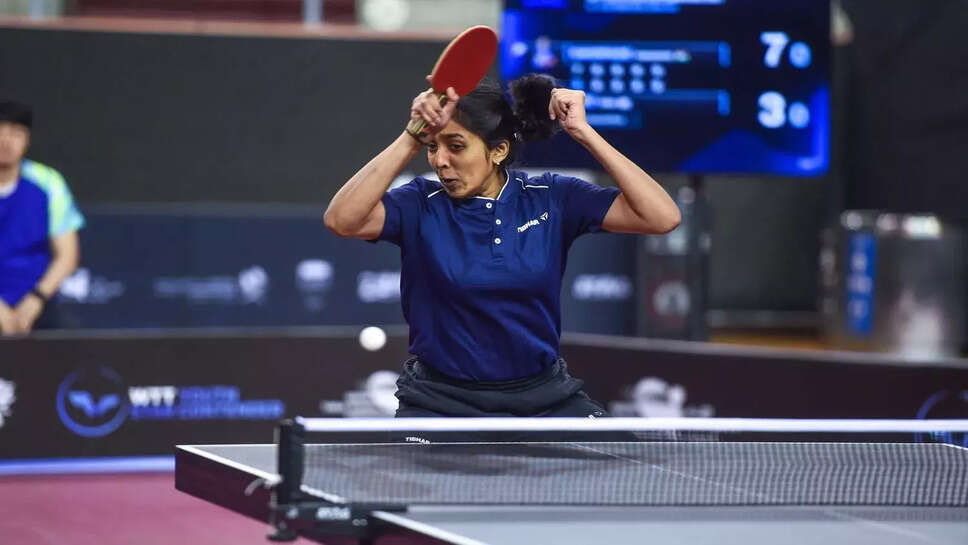International Exposure Sharpens Yashaswini Ghorpade’s Game and Recovery Regime

India’s table tennis landscape has seen a quietly building powerhouse in 19‑year‑old Yashaswini Ghorpade. As she sharpens her game, Yashaswini has embraced powerful techniques and sports science insights gleaned from her time training overseas. In her quest for global success, she’s invested deeply in two key areas: mastering the “power game” and enhancing her “recovery” routines. Together, these lessons are redefining her style, resilience, and ambition as she transitions from national promise to international contender.
1. Stepping Into the Power Arena
Most of Yashaswini’s international exposure comes from foreign training camps and competitions in China, Germany, and Sweden—nations known for their brimming table tennis cultures. She describes her experience abroad as a “humbling eye-opener.”
Foreign coaches, she said, initially set a high bar: “I realized I needed more speed, more topspin, more aggression—not just tactical smarts.” The shift wasn’t just in mindset, it was in movement. In Germany, she worked with strength and conditioning coaches who emphasized fast-twitch muscle development and plyometrics. These variations improved her explosive footwork, enabling quicker access to the wide angles and sudden forehand loops that define aggressive modern play.
Chinese and European coaches focused on swing mechanics. They analyzed video frame-by-frame, refining her stroke to maximize racket head speed. The results were visible: earlier this season, at a national ranking tournament, Yashaswini delivered blistering forehands and counter-hits that hinted at her overseas training paying off.
2. Enhancing Her Power Game
Building a power-centric style required an overhaul of her training routine.
-
Strength training became a staple—dedicated gym sessions targeted lower-body explosiveness and upper-body stability.
-
Multiball drills ramped up in intensity and frequency, with coaches feeding balls at high cadence to force her to play aggressively under pressure.
-
Resistance bands and weighted rackets added load to her swings, improving acceleration when switching to match play.
On the tactical side, she learned to manage shot selection more proactively and gauge when to accelerate rallies early. Embracing the power game also reshaped her mental approach. “You have to believe you can maintain that aggression across long matches,” she said, talking about stamina as much as technique.
3. Recover Smarter, Play Longer
As intensity increased, so did the need for smart recovery. In Europe, she discovered a holistic recovery model—one that treated her body as a finely tuned instrument requiring precise care between sessions.
Key practices included:
-
Cold-water immersion to reduce inflammation and speed muscle recovery.
-
Mobility routines for hips, shoulders, and ankles to maintain joint health.
-
Compression wear was used after matches to accelerate blood flow and reduce fatigue.
Nutrition was overhauled too. Gone were empty-carbohydrate recovery meals; replaced with balanced intake of proteins, anti-inflammatories like turmeric and berries, and quality carbohydrates like quinoa and oats.
A crucial part of her evolution was understanding "active recovery"—a low-impact day after intense workouts. Instead of full rest, she would swim or cycle, bolstering circulation, aiding muscle repair, and protecting mental freshness. Since adopting this model, she’s felt stronger during tight tournament schedules, commenting that she’s “less drained, less sore” even after back-to-back matches.
4. Mental Resilience Through Recovery
Recovery, she stresses, isn’t just physical. It’s mental too. In high-pressure foreign tournaments where near-perfect performance is expected, she learned that short breaks—yoga, mindfulness, meditation—can restore focus.
At her camp in Stockholm, she took part in guided breathing and concentration exercises before matches. This helped her maintain composure in tense second-game situations, and allowed her to reset between points—a small but crucial shift in tight contests.
5. Translating Lessons to Local Training
Back home at the national camp in Nagpur and during league competitions, Yashaswini introduced key foreign techniques she picked up overseas:
-
Coaches instituted more multiball sessions, combining intensity with recovery mini-breaks.
-
The gym program was standardized, providing resistance and agility work even to younger athletes.
-
Recovery routines—mobility and nutrition tips—were shared across the squad, lifting the overall team’s resilience.
She also encouraged peers to adopt mobility routines before bed, improve sleep hygiene, and treat rest days like part of their performance training rather than ‘downtime.’
6. Competitive Impact in Domestic Events
The results are tangible. At a national event in Bhubaneshwar, she pulled off a string of victories against much higher-ranked players, credited to her aggressive rallying and rapid stroke recovery. Commentators noted her dramatic acceleration in rallies and her uncanny ability to recover between points without losing rhythm.
Her BWF ranking has climbed, and national selectors have taken notice. There’s growing confidence she’s representing India at senior Asian Championships and Commonwealth Games in the near future.
7. Evolving Toward a Complete Player
Yashaswini emphasizes she’s not abandoning upside-down safety strategies; rather, she’s blending them with aggression. Against defensive choppers, she’ll disrupt with high-risk loops. Against attackers, she’ll pounce early with deep counters. Her hybridization stems from understanding that power without recovery is unsustainable—and defense without speed is conceding space.
This balance was likely inspired by foreign styles she admires, like Japan’s Hina Hayata or Germany’s Petrissa Solja—players who combine sustained aggression with athletic endurance. “It’s about being the biggest fish, but in the healthiest pond,” she says.
8. The Road Ahead
As she eyes selection for major international events, her daily schedule includes:
-
Morning: Footwork, transition agility, power multiball drills.
-
Afternoon: Gym, stroke refinement, video analysis.
-
Evening: Recovery circuit, mobility, meditation.
-
Rest Days: Cross-training—yoga, swimming, cycling.
She’s entering a phase where every minor increment in swing speed, recovery efficiency, or mental clarity could mean the difference between medals or obscurity.
9. Inspiration to the Next Generation
Yashaswini hopes her journey inspires other Indian players to embrace long-term athletic development. She’s spoken about how recovery science isn’t a luxury—it’s a requirement for players who want to be competitive at the global level. If India wants world-class results, she says, we need to train and recover like world-class athletes.
10. A Vision in Motion
Yashaswini Ghorpade stands at the intersection of tradition and performance science in Indian table tennis. Her integration of foreign lessons—power and recovery—are more than personal tools. They’re symbols of a new chapter. Yashaswini isn’t just competing overseas—she’s returning with proven frameworks, mentor training, and a balanced mindset, positioning her for international breakthrough.
This young athlete’s journey is a blueprint: to grow bigger, faster, stronger—but also smarter and scar-free, mentally primed and ready for a demanding global future. Play hard, recover hard—that might just be India’s new power mantra.
